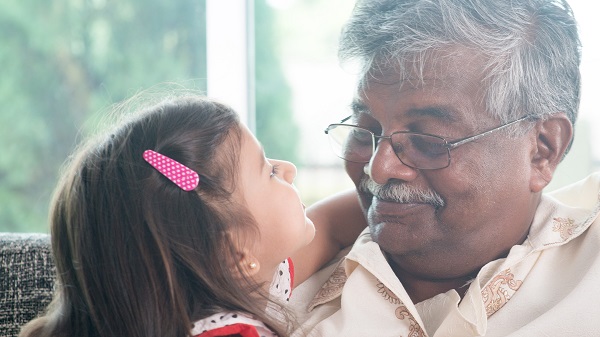The pioneering Australian study that’s changing how we think about ageing
In 2018, for the first time in Australia’s history, the number of Australians aged over 65 outnumbered those under 30. Over the next 20 years, the number of Australians over 65 is projected to exceed 6.5 million.
As a result, the health of Australia’s ageing population is now more important than ever, and researchers are not just tasked with finding new cures and treatments for a range of age-related conditions – the pressure is on to better understand how we can stay healthy for longer.

Between 2006 and 2009, more than 260,000 people in NSW joined the 45 and Up Study. With one in 10 NSW men and women aged over 45 participating, it’s now the largest ongoing study of healthy ageing in the Southern Hemisphere.
Since its early days, the participants have received two detailed follow-up questionnaires, which assess everything from the use of medical services through to various lifestyle choices.
All participants have agreed to have the data from the questionnaires linked to their medical records, such as hospital, pharmaceutical, and GP information.
It’s provided a huge, unique resource that researchers from more than 80 institutions around the world are currently exploring, and has already resulted in more than 300 scientific papers on everything from maintaining independence in old age and sexual wellbeing following prostate cancer, to the uses of fish oil and the optimal fruit and vegetable intake.
Current research includes risk factors for admission to residential aged care; osteoporosis management; understanding chronic kidney disease; looking at how sleep patterns affect health outcomes; and cancer in NSW farmers.
“What’s been fantastic is that we have more than 750 researchers using the data and they are all really passionate about their own area,” says the study’s scientific director, Professor Emily Banks, a public health physician and epidemiologist at the Australian National University (ANU). “Each one of their findings is pushing the boundaries in that area.”
Banks says the research has already helped medical institutions, health practitioners, local councils, and governments make policy changes.
For example, one study has shown that a suburb’s surroundings affect whether or not an older person will walk recreationally at a level that could provide health benefits. This is helping local councils improve their town planning.
Another study has demonstrated that up to two-thirds of smokers will die directly from medical conditions caused by their habit.
“Previous studies have indicated that it was half of all smokers who die,” says Banks. “That change from half to up to two-thirds says something very different about the balance of probability, and they’re now using our figures to help support people who want to quit smoking on the Quitline.”
Banks says the follow-up questionnaires are sent out to 50,000 participants each year, forever adding to the data pool that is available, and making it relatively easy to contribute information to other long-term studies.
“For example, the Australian Institute of Health and Welfare was doing a burden of disease study – they’d heard about us and said, ‘We’d really like to know the relationship of smoking to these 40 different outcomes, such as cataracts,’” Banks explains.
“In a period of a few months, we were able to do that study. If we had to set it up from scratch, it would have taken 15 years.”
Many organisations have partnered with the study, which is run by the Sax Institute – an independent, not-for-profit research group in Sydney that receives core funding from the NSW Ministry of Health.
CEO of the Institute, Professor Sally Redman, says the 45 and Up Study was one of the first initiatives that the Sax Institute took on when it formed in 2002, viewing it as the perfect opportunity to run the kind of study that other organisations couldn’t have managed on their own.
“Because of the project’s size, it has a lot of potential to answer questions that are very meaningful,” says Redman.
“As the participants move through successive decades, it’s creating an incredibly rich resource that will be so useful in the future. We’re starting to tell the story of how they age and what keeps them healthy, and how their living patterns change over time.”
Even when the 45 and Up participants die, the information gathered about them over the preceding years is providing extremely valuable insights, Banks adds.
“We’ve had more than 30,000 people die in the cohort so far, and we can look back at what they were exposed to, what contributed to them dying prematurely, and what they died from,” she explains.
“What we need in research like this is that big number, and enough major events, such as people going to hospital.”
With the latest follow-up questionnaire having been distributed in early 2018, we’re about to see a whole new wave of insights come through.
This will hopefully give current and future generations of Australians the best chance against conditions such as cancer, heart disease, depression, obesity, and diabetes.
Head to the 45 and Up website to view questionnaires, data books, news stories, and more.
By Ken Eastwood
Updated 5 years ago